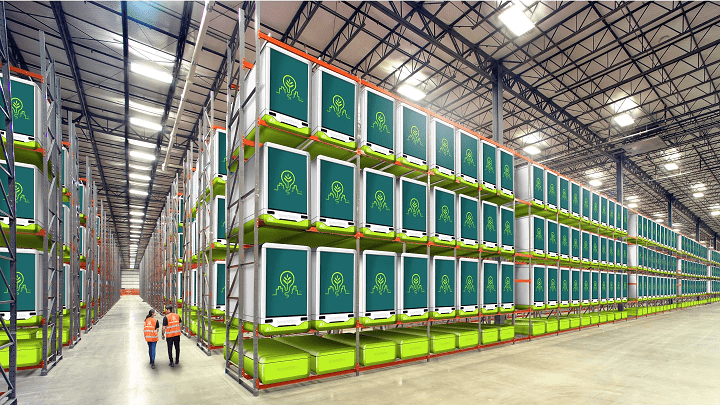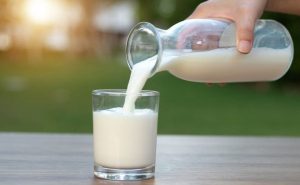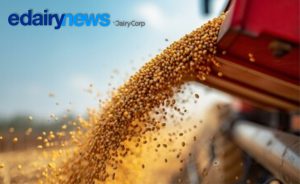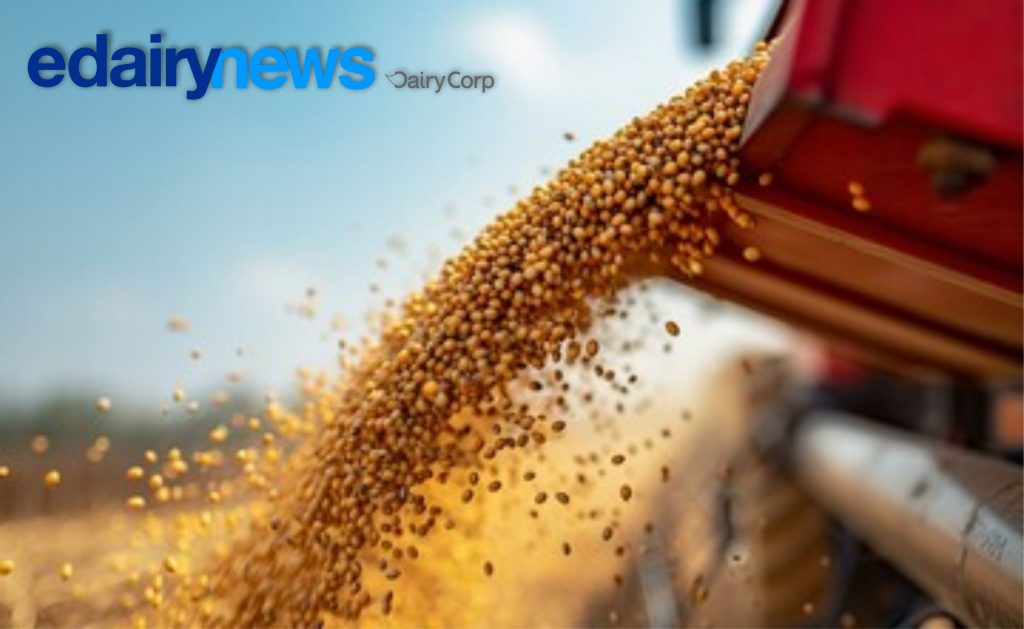Australian scientists and entrepreneurs are working on solutions to adapt to this changing reality. They include vertical, indoor, modular farming; greenhouses that are actually shades of pink and orange; collating and digitising almost 150 years of rainstorms and dry spells; and even looking to outer space.
“Australian farmers are one of the most innovative groups of farmers in the world and that’s because we have a very variable climate,” says CSIRO’s Michael Robertson. “One never knows what’s next in terms of seasonal conditions.”
As global conditions change, the volatility experienced by Australian farmers will become the norm for all, Dr Robertson says. And the ways they’ve coped will offer invaluable insight for other countries seeking to adapt.
“More and more, they’ll be seeing the kind of conditions Australian farmers [always have],” he says. “Farmers in the Med [who] are seeing the impact of climate change on the ups and downs of seasonal conditions … or the sorts of spread of diseases and weeds and pests that we’re seeing in some parts of the world now that has always been an issue for Australian agriculture.”
Dr Robertson, who has been with the organisation since 1992, is the deputy director of the CSIRO’s agriculture and food unit. The 1000-strong research team is working on various technologies to help farmers and the industry adapt, including drought-resistant crops, digital agriculture data-based tools, faster-growing salmon, and systems to measure farm sustainability.
Almost 90,000 agricultural businesses are among those in need of innovative solutions. According to the latest ABS data, 332 million hectares of land are used for grazing and 31 million hectares for crops. Agricultural businesses operate across 51 per cent of the country’s total land area, with 77 per cent of farmers being male. On average, that farmer is 58 years old, with 37 years’ experience on the land.
Entrepreneur Dale Schilling is trying to make life easier for these farmers. Schilling’s father, Ray, was a sheep and wheat farmer in Mildura in north-west Victoria – the owner of a small business, like 71.2 per cent of Australian farming businesses, according to the National Farmers’ Federation. Schilling spent school holidays helping his father on the farm. He witnessed the devastating impact of weather, predictable and not. And how quickly things can change.
“I’ve seen firsthand what happens,” he says. “On average, farming is a great business. In some years, you have a bumper crop, prices are good and life’s pretty good. On average, you can make a decent return. But in those bad years, it’s really bad.”
Favourable conditions and rainfall in the beginning of the 2020 winter cropping season leaves farmers in a better place than earlier this year, when “extremely unfavourable weather conditions”, record low soil-moisture levels and record high temperatures left many wringing their hands. This year’s winter crop production is now forecast to increase 5 per cent above the 10-year average.
“The increasing frequency and severity of extended dry spells, associated with increased unpredictability of unseasonal heatwaves and frosts, will impose a noticeable handbrake on growth in farm gate output, particularly in southern Australia,” Dr Robertson says.
In 2018, Schilling co-founded Hillridge Technology, a startup enabling global insurance companies to provide weather protection for small to medium-sized Australian farm businesses. These farmers “take enormous risk right upfront of the season”, Schilling says. Such risk can put them out of business if drought, too much rain or heat stress cause crop or stock losses.
Hillridge uses data from SILO (a Queensland government database of Australian climate data, based on Bureau of Meteorology weather data from 1889 to now) and computes prices through their financial algorithms. Using partnerships with foreign underwriters who are able to spread their risk more widely, as well as local distributors, Hillridge enables stable and affordable insurance to be offered to smaller farming businesses that previously have not had access to financial risk management products available to large farming businesses.
“That kind of computing technology – could it have been done five years ago? Maybe,” Schilling says. “It’s like car insurance on the internet; it was unthinkable 10 years ago but now you can do it on your phone.”
In its testing phase, Hillridge worked with graziers, dairy and broadacre farmers and vineyards in south-east Queensland, Moree, Wagga Wagga and Western Australia. They’re on track to launch to the public in August.
Schilling and co-founder Dai Kyu Kim were members of the 2019 GrowLab cohort, funded by Cicada Innovations. They spent six months working on the technology in Cicada’s warren of offices and laboratories behind Redfern train station. Ideas that started here have made it across Australia to Ukraine, New Zealand, Malaysia and NASA’s testing labs in Hawaii.
Cicada incubates deep-tech startups – highly technical, science-based solutions that require years of research and development to troubleshoot and validate.
“There’s no one single solution in this space. We need a lot of them,” Cicada CEO Sally-Ann Williams says. “The conversation we have to be having as a nation is what are we going to be doing in this decade that’s going to have an impact.”
Projections by the United Nations suggest the global population will reach 9.8 billion by 2050, attributing the majority of that growth to nine countries, among them India, Nigeria, Ethiopia and Indonesia. Globally, the OECD reports, farms on less than two hectares represent 84 per cent of all farms.
The UN’s World Population Prospects: The 2017 Revision reports life expectancy is rising and migration continues. The 2010 Treasury Intergenerational Report projected Australia’s population would reach 35.9 million by 2050. It is now about 25.6 million.
“Globally, things are going to get more volatile,” Schilling says. “In many ways, Australia is 10 to 20 years ahead of the rest of the world in terms of experiencing the effects of climate change … We have an opportunity to be real world leaders in terms of how to make your farms more adaptable and resilient to climate change.”
The volatility will disrupt the capacity to farm as well as business processes and productivity, he says. When farmers can’t feed their animals, or have to de-stock due to disease or financial pressure, the resulting impacts can put farming families out of business.
“[Our technology is] addressing something that’s pretty fundamental to how we farm,” says Schilling. “And that’s just as important as environmental sustainability because without that, farming just won’t continue.”
CSIRO research and technology has global reach. Dr Robertson lists gene-silencing technology, crop computer-modelling systems and locally developed feed additives (such as seaweed added to cattle feed to reduce methane production) and crop varieties among its exports.
Australian technology has a lot to teach the rest of the world.’
Dr Michael Robertson, CSIRO
One of the tools developed by the CSIRO that is having significant impact in sub-Saharan Africa, India and other parts of Asia is The Chameleon: a sensor tool that reads soil moisture and relays to the farmer, and the community, the health of the land.
“The guy who invented that at CSIRO developed his understanding and insight and technology for that with work he did with irrigation farmers in Australia over many years,” Dr Robertson says.
“Australian technology has a lot to teach the rest of the world, particularly growing areas with similar harsh climate and old soils that we have. Our wheat breeds are having an impact on international breeding programs, particularly in dry environments. Our aquaculture expertise in prawn breeding and nutrition is transforming the Vietnamese industry and helping us pour resources into growing the Australian industry in turn.”
Ben Lee’s idea went global, too. It involves vertical farming and modular technology and even works – theoretically – on Mars, via NASA’s Sensoria Mars Simulation testing ground in Mauna Loa, Hawaii. Lee, a member of the 2017 GrowLab cohort, co-founded InvertiGro: flexible, modular units that enable hydroponic and aeroponic indoor vertical farming on large and small scales.
The design – a 1.5-by-2-metre cube that can be arranged depending on available space – means that crops can be produced year-round in otherwise disused spaces. Currently, InvertiGro’s cube units are producing micro-greens, leafy vegetables and soft fruits locally, with plans to expand into Singapore.
“The technology we bring is to augment traditional agriculture, not replace it,” Lee says. “Farmers have always been extremely innovative but changes beyond their control require different approaches.”
Like Schilling, Alex Soeriyadi, the co-founder of LLEAF, grew up surrounded by agriculture.
LLEAF’s bright pink and orange plastic sheets are designed to adapt to existing greenhouse environments, enabling farmers to use the structures they already have with increased yield – in some cases, Soeriyadi says, by up to 40 per cent. The sheets modify sunlight to “critical frequencies” of colour to accelerate the plants’ growth cycle. The team hopes to roll out the product commercially by the end of the year.
“Global challenges like climate change and food security are contributing to volatile and increasingly complex food supply chains,” Soeriyadi says. “Protected and indoor cropping is on the rise, driven by this growing need to adapt our traditional farming environments.”
On her 260-hectare, 55,000-tree Calypso mango farm in the Northern Territory, Martina Matzner is employing precision and digital agriculture to minimise waste, maximise productivity and protect the area’s precious natural resources.
Using a combination of “satellite and measuring gun” technology, imaging systems and monitoring devices, Matzner is able to monitor fruit maturity, forecast fruit volumes and collect other statistics that enable more precise mango picking and farm management to avoid resource depletion.
It enables the Acacia Hills team to deploy labour where it’s most needed, and “maximise our harvest window”.
“Farming is no longer a farmer’s business, it’s everyone’s business,” she says. “There’s only one word: collaboration. We need to work together, and that’s across all sectors. Let’s just face the challenges together … and focus on practical outcomes … that can be adopted.”
Matzner is also deeply passionate about mitigating food waste and reframing consumer tendencies so that imperfect or aesthetically damaged fruit is not relegated to a waste pile.
“We’ve created this really unrealistic expectation in food quality,” says Matzner. “If you can’t use 10-15 per cent of your product because it doesn’t fit the quality standard … which way do we go? We have a lot of technology that is driven by food quality but I also think we have to be smarter, that we use technology to enable us to achieve more than the aesthetic quality.”
By reducing food waste, farmers would be able to make more use of their produce, thereby increasing productivity and output – and, ideally, making for a more adept farm.
Lee agrees.
“I believe that consumers need to be re-educated around the perception of ‘perfect’-looking produce as a part of waste comes from produce being discarded as it’s not deemed to be ‘good enough’ for the consumer market.”
Australia currently produces “enough food for 60 million people”, Dr Robertson says, and while the country is not in danger of food insecurity in the near future, the economic and opportunity loss is substantial. Reframing the conversation would better prepare for a future where such crop waste is no longer viable.
“There’s a danger that technology will only get us so far,” Schilling, the son of the wheat and sheep farmer from Mildura, says. “I’d like to demonstrate that things can be done differently. Who knows: it might be transformational, it might not be. But I want to give it a red-hot go.”













